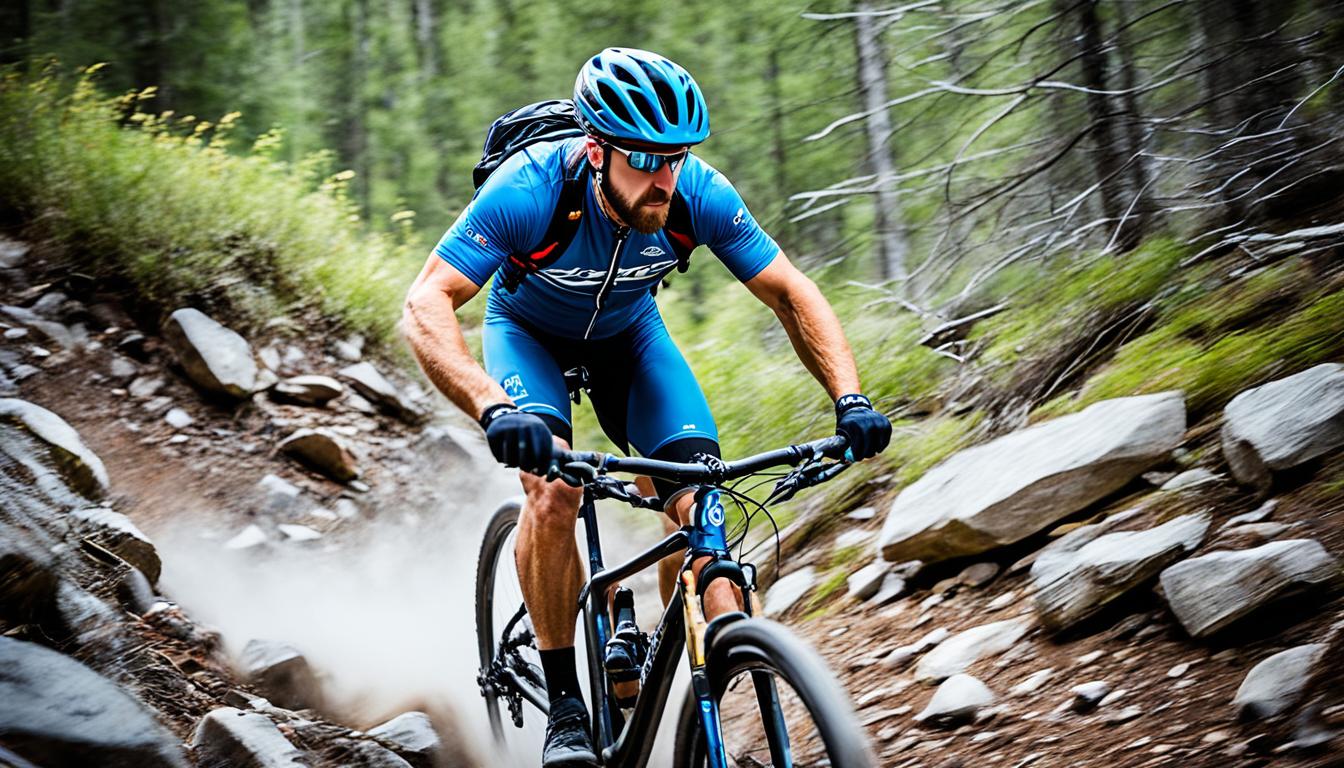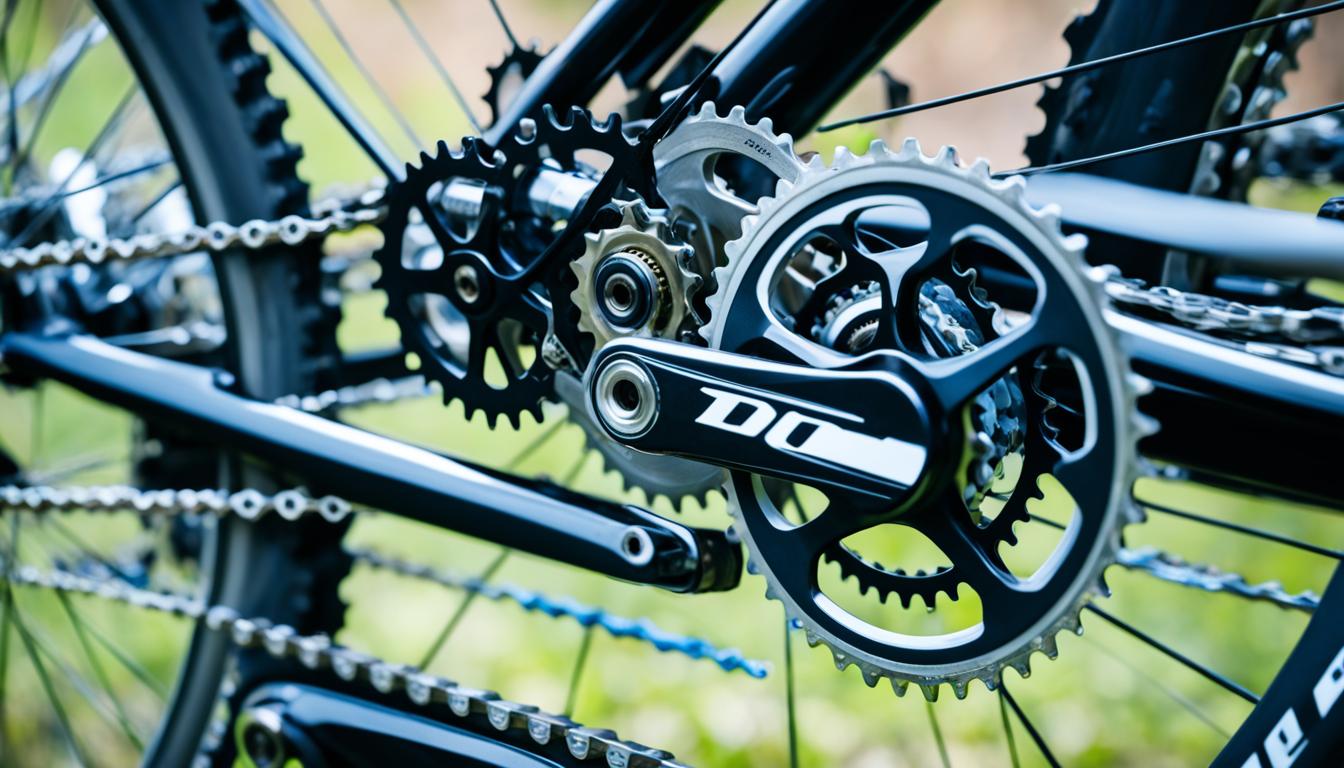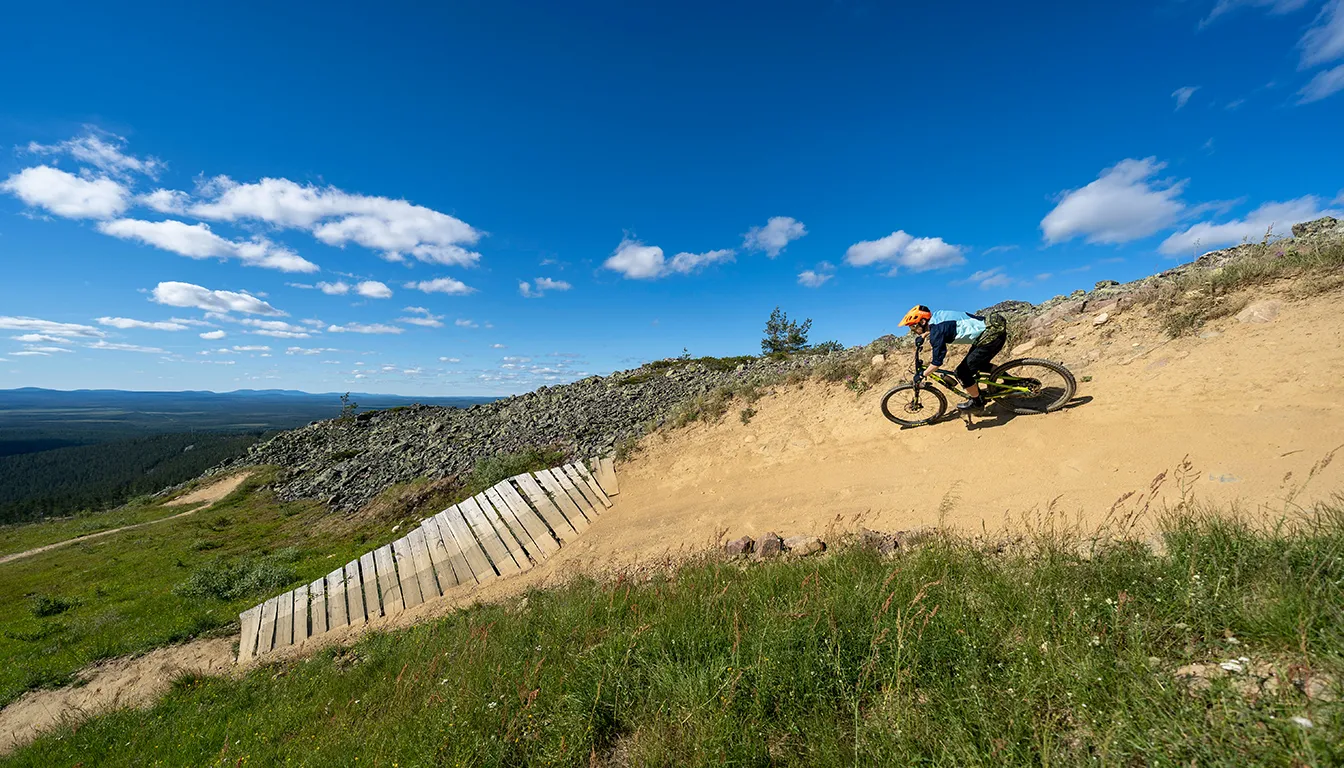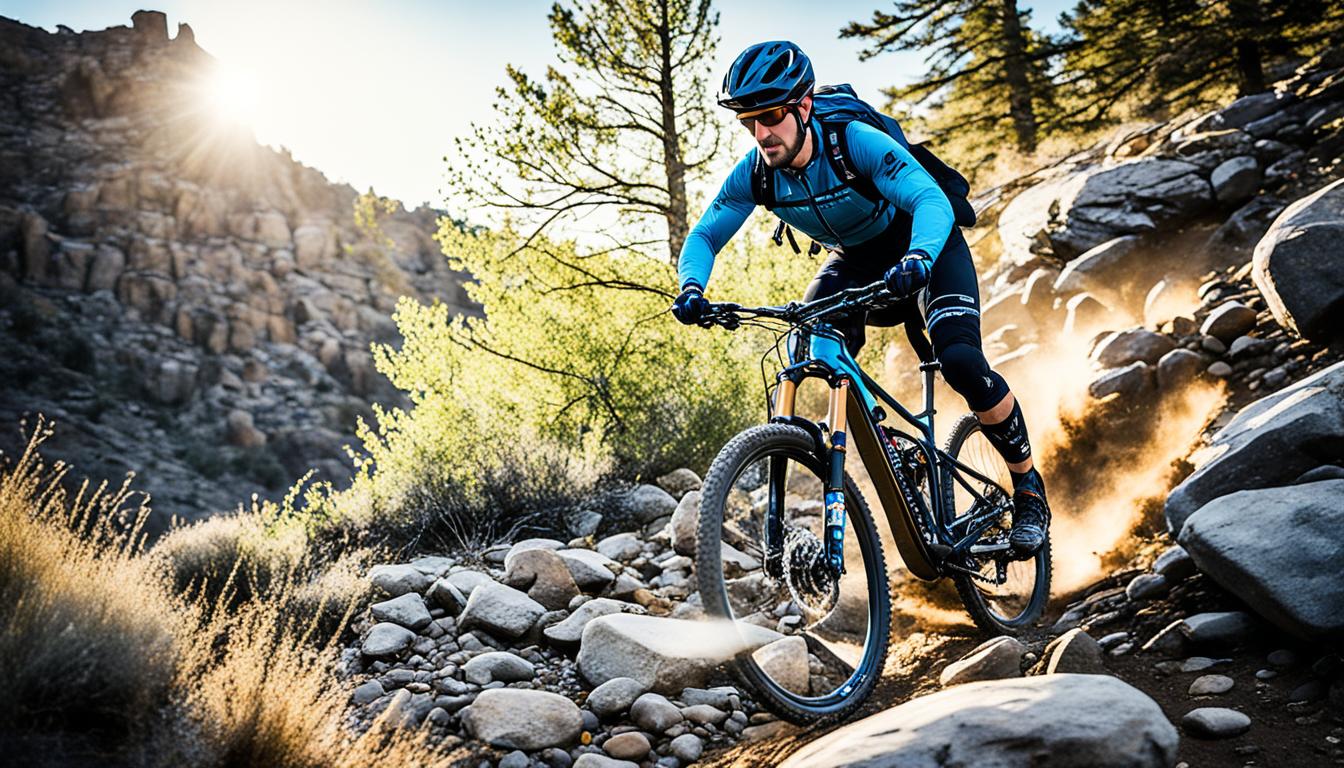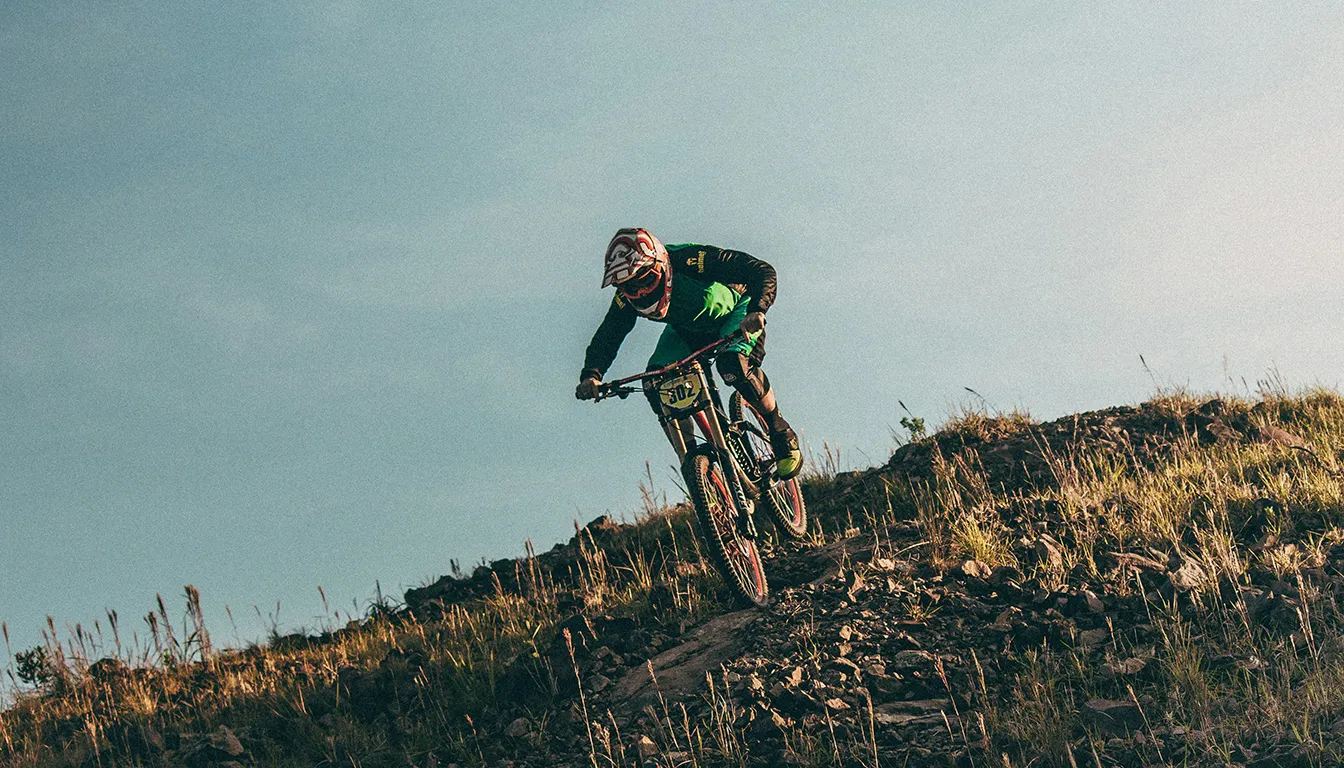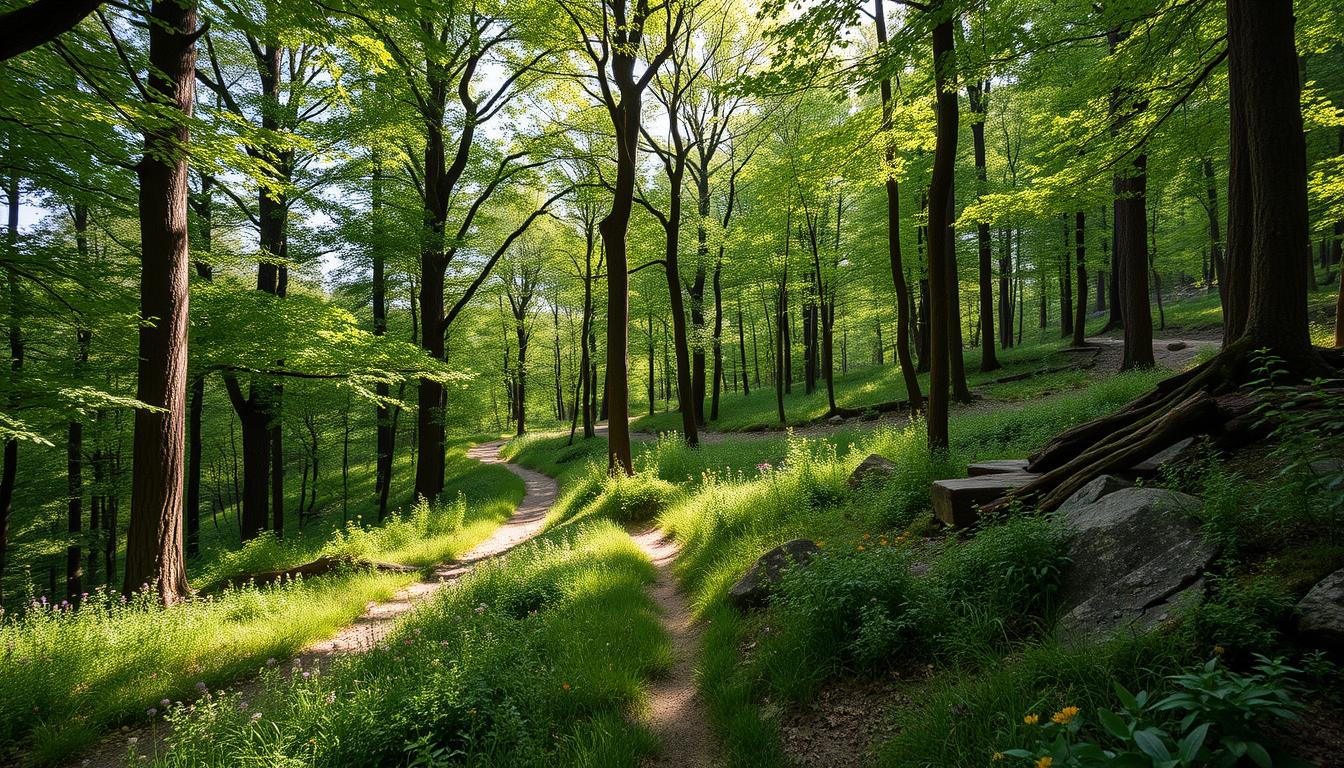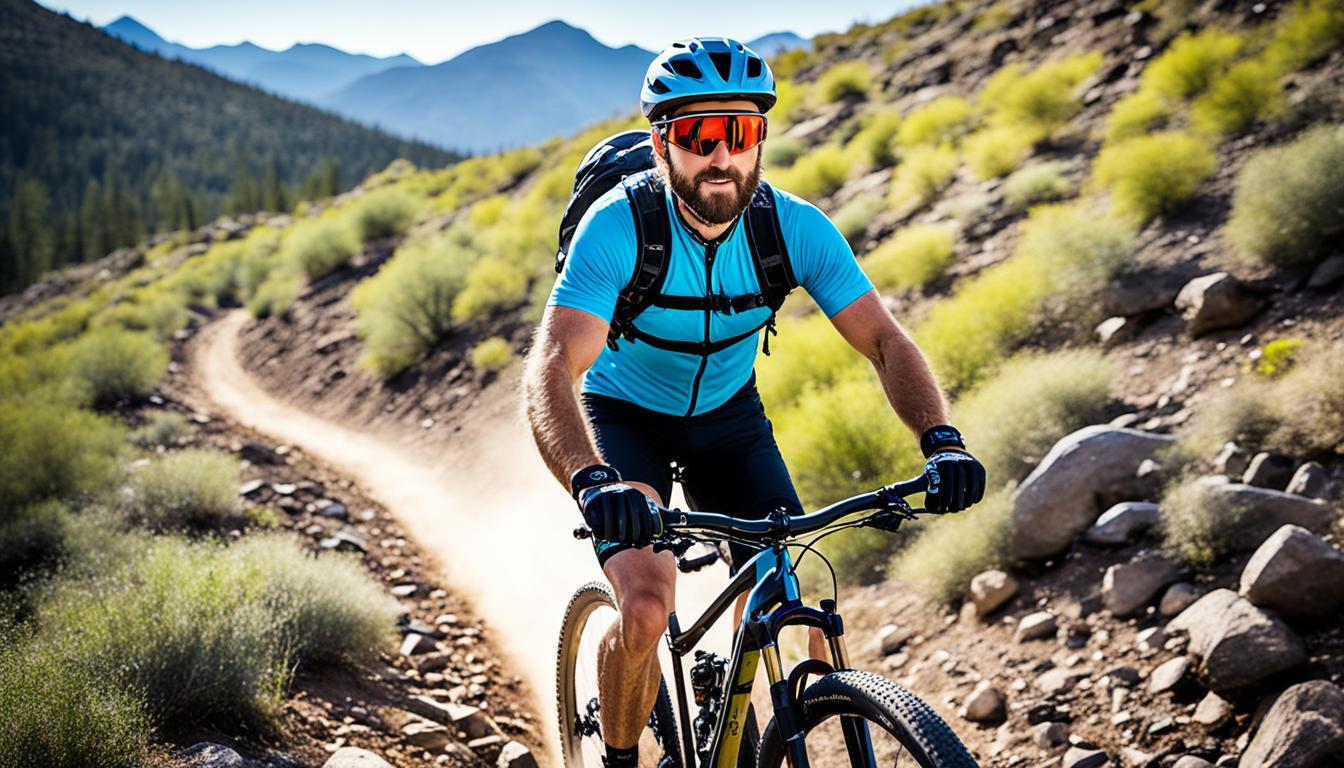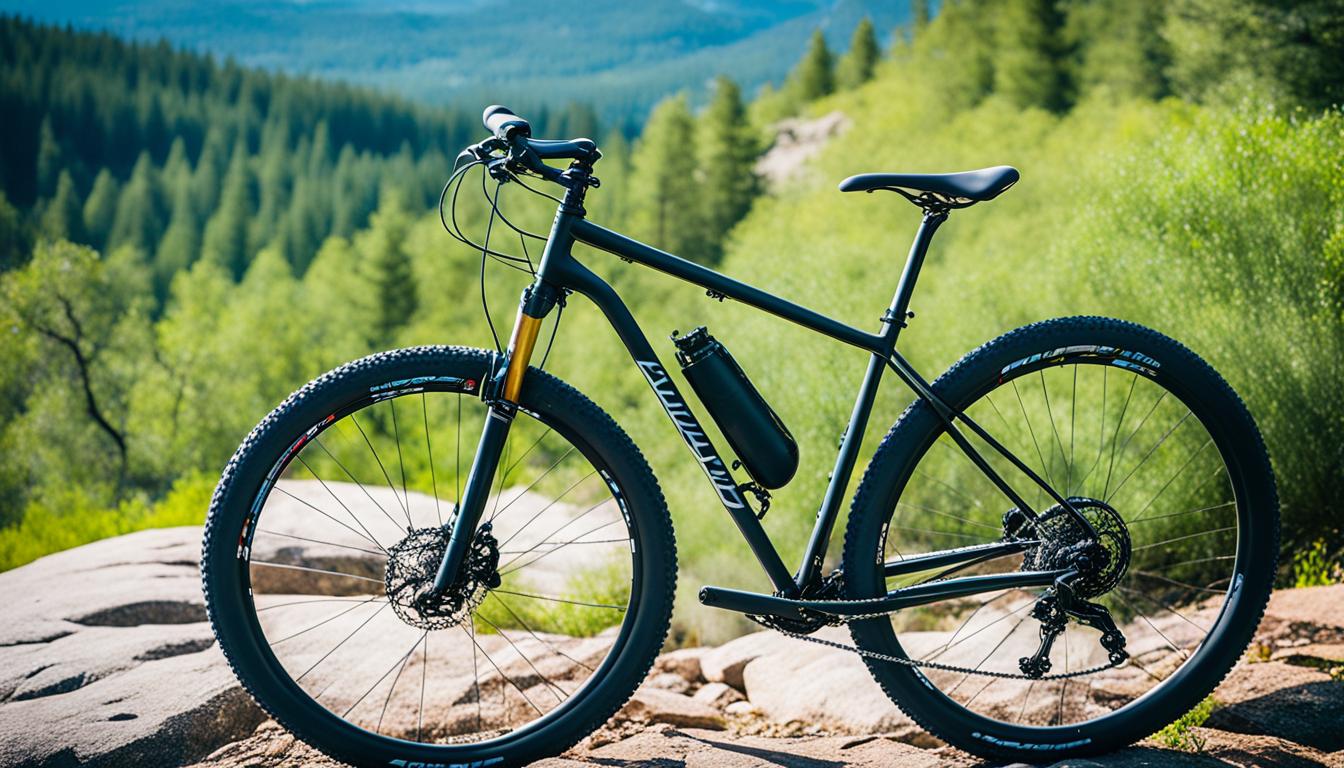Single speed mountain biking offers unique challenges. Riders must learn specific skills for this format. It’s vital to maintain momentum both uphill and downhill.
This part will cover important techniques for single speed biking. These tips will improve your ride and build trail confidence.
Understanding Single Speed Mountain Biking
Single speed mountain biking mixes simplicity with challenge. It is loved by many riders. What does a single speed bike mean? It has just one gear, so you don’t shift gears while riding. This setup lets riders focus more on their technique and how they position their bodies. It makes their time on the trails better.
What is Single Speed Mountain Biking?
Single speed mountain biking is simple. It has no gears to change. This means a simpler bike setup. Riders feel a closer tie to the ground beneath them. They work to keep up speed and pedal efficiently. This style challenges riders. It helps them boost their skills and get fitter, turning every trip into a chance to get better.
Advantages of Single Speed Bikes
Single speed bikes offer many benefits, drawing in all kinds of riders:
- Affordability: Singlespeed mountain bikes often cost less than geared bikes. This makes them a great choice for newcomers to the sport.
- Maintenance: They have fewer parts, so they don’t need much upkeep. This means you spend less time and money on maintenance.
- Enhanced Riding Experience: A singlespeed bike can change how you see familiar paths. It helps improve your riding skills and technique.
- Efficiency: You need to keep your speed up and pick your path wisely. This leads to smoother rides, up hills and down.
- Fitness Benefits: The way you pedal these bikes boosts your strength and fitness. It’s a different workout from riding bikes with gears.
Maintaining Momentum on Climbs
Keeping up momentum is key when you’re biking up hills on a single-speed bike. Losing speed and grip on steep climbs is a common issue. It’s vital to know how to climb effectively. Strategies like managing weight and pedal speed can make a big difference.
Importance of Momentum in Climbing
Momentum is everything when going uphill. Skilled riders know it’s important to keep moving steadily. Entering a climb with the right mindset stops you from stopping suddenly. Techniques that help include shifting your weight and leaning forward. Using your core and hips right also helps spread your weight. This is good for keeping power and preventing slip-ups.
Choosing the Right Gear Ratios
Choosing the best gear ratio is crucial for good climbing. Riders share tips online, showing that the right gear keeps you moving up at a steady speed. Finding the gear that feels just right is key. It helps keep up your momentum without tiring you out too much. The right gears help a lot with climbing techniques, especially on tricky paths. Knowing how to pick your gear can greatly improve how well you climb.
Single Speed Mountain Biking Techniques for Efficient Climbing
Learning how to climb efficiently with a single speed mountain bike is essential. It involves knowing the right body position and how to transfer power correctly. Doing this will not only boost your performance but also make climbs feel less hard. This way, tackling steep hills becomes easier.
Adopting the Right Body Position
The way you position your body is key when going uphill. Leaning forward shifts your weight to the front wheel, improving its grip. Also, keeping your core tight helps with balance. A good position makes sure your power really pushes through the pedals, making climbs easier.
Using Rocking Motion to Enhance Power Transfer
A rocking motion can make your climbing even better. It involves shifting your weight forward as you pedal. This helps make your connection to the ground stronger. Combining this with pedalling fast makes your climbing smooth and fast. This technique really helps on long climbs.
Descending Techniques Specific to Single Speed Bikes
To master going downhill on a single speed bike, you need special techniques. This ensures you stay steady and confident. With the right ways, you can enjoy smooth rides downhill and keep in control.
Body Positioning for Control and Stability
Controlling your bike downhill begins with how you position yourself. It’s key to keep a low centre of gravity. This helps keep you balanced while you go downhill. Here are the main points:
- Keep your weight a bit back but stay neutral.
- Keep your elbows out and relaxed to steer better.
- Sitting back in the saddle helps spread your weight for more stability.
About 70% of riders find getting the body position right on steep trails tricky. Yet, doing so really improves control. Those who manage a balanced weight distribution do 50% better on rough trails.
Looking Ahead for Smooth Descents
Being able to anticipate what’s coming is key for good downhill rides. Focus on looking forward. Search the road for anything in your way and plan your move. This helps you dodge road flaws and stay sure during the ride. Tips include:
- Brake early before turning in corners.
- Pedalling as you go down helps your muscles and keeps the bike stable.
- Stretch your hands now and again to stop them from cramping on long downhills.
Descending skill is more than just body position; it’s about how you plan your ride to stay comfy and safe. Many riders find it helps to adjust their saddle height before they start, especially with quick-release clamps. Using bigger tyres (35-38 mm) also helps a lot. They increase grip, making your ride smoother.
Conclusion
Learning single speed mountain biking skills is crucial for a better ride. It’s all about keeping your momentum, climbing well, and descending with control. These tips show why riding a bike with one gear can improve your biking hugely. Many bikers find they enjoy riding more on different trails thanks to the bike’s simplicity.
With the right approach, you can master biking skills that enhance your performance. Riders taking on the singlespeed challenge often feel stronger, especially going uphill. If you’re looking for excitement without complexity, choosing a single speed bike is enticing.
Remember, practice makes perfect. By applying these techniques and challenging yourself, single speed mountain biking becomes a great adventure. Start your journey into singlespeed biking by checking out this article. You’ll soon find more joy in hitting the trails.
FAQ
What is single speed mountain biking?
Single speed mountain biking means riding bikes with just one gear. There’s no need to shift gears while riding. This lets riders pay more attention to pedalling well.
What are the advantages of using a single speed bike?
Single speed bikes are simpler, so they need less fixing. They’re lighter and more efficient for going uphill and downhill. They also let you feel more connected to the ground.
How can I maintain momentum while climbing on a single speed bike?
Keeping momentum up hills needs a plan. Use deep breaths, keep your weight back to stop slipping, and try to speed up before the hill. Picking the right gear ratio matters too.
What body position should I adopt for efficient climbing?
To climb well, lean forward to keep your back wheel gripping. Also, make sure your core is strong. This helps you push harder on the pedals.
How can I enhance power transfer while climbing?
A rocking motion can up your power. It means moving the bike’s weight forward when your pedal stroke is weakest.
What techniques should I use when descending on a single speed bike?
When going downhill, stay low to keep balance and grip. Shift your weight the right way. Always look forward to see what’s coming up, not just at your wheel.
Why is it important to look ahead when descending?
Looking ahead helps you spot obstacles early. This means you can plan your route better, making for a smoother ride down.
Can I gain confidence in descending with practice?
Yes, practising your downhill skills often will definitely boost your confidence. This means you’ll have more fun riding on all kinds of paths.
